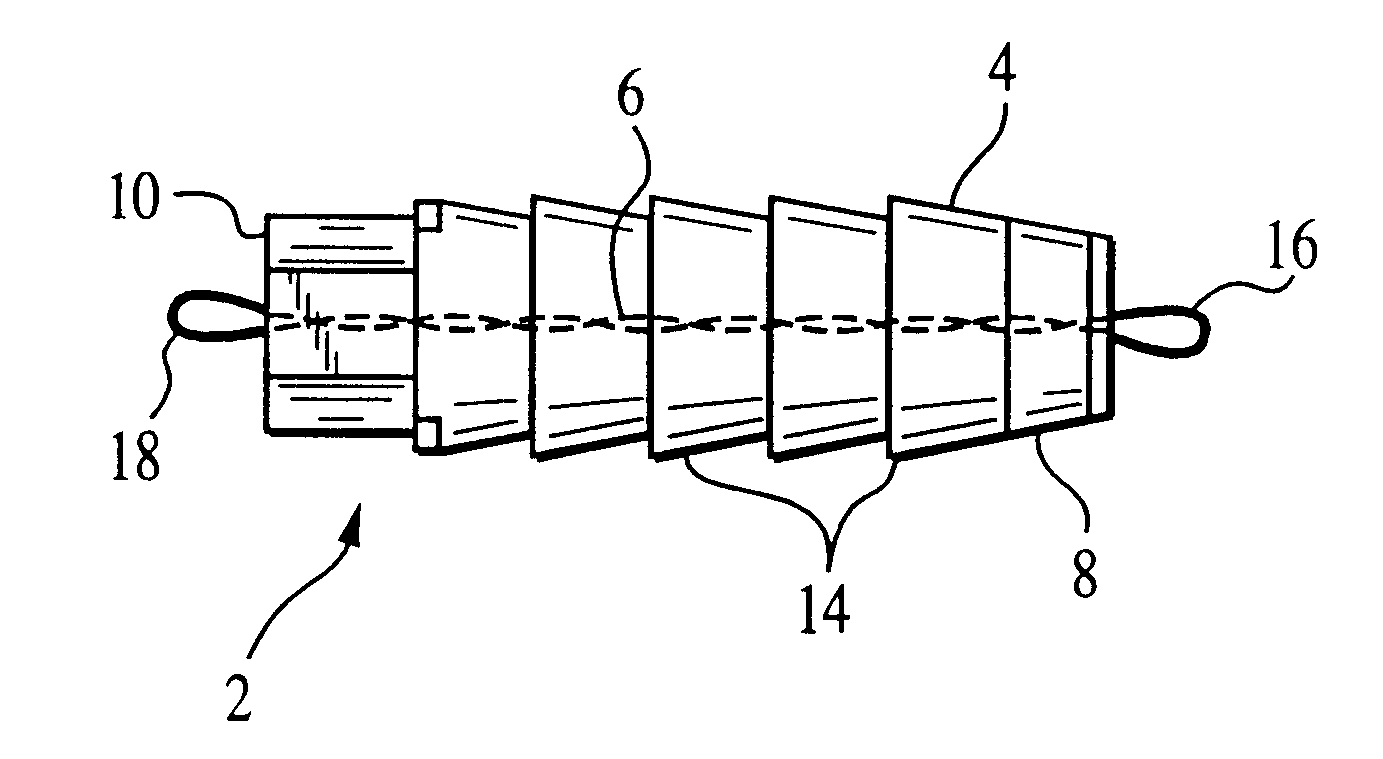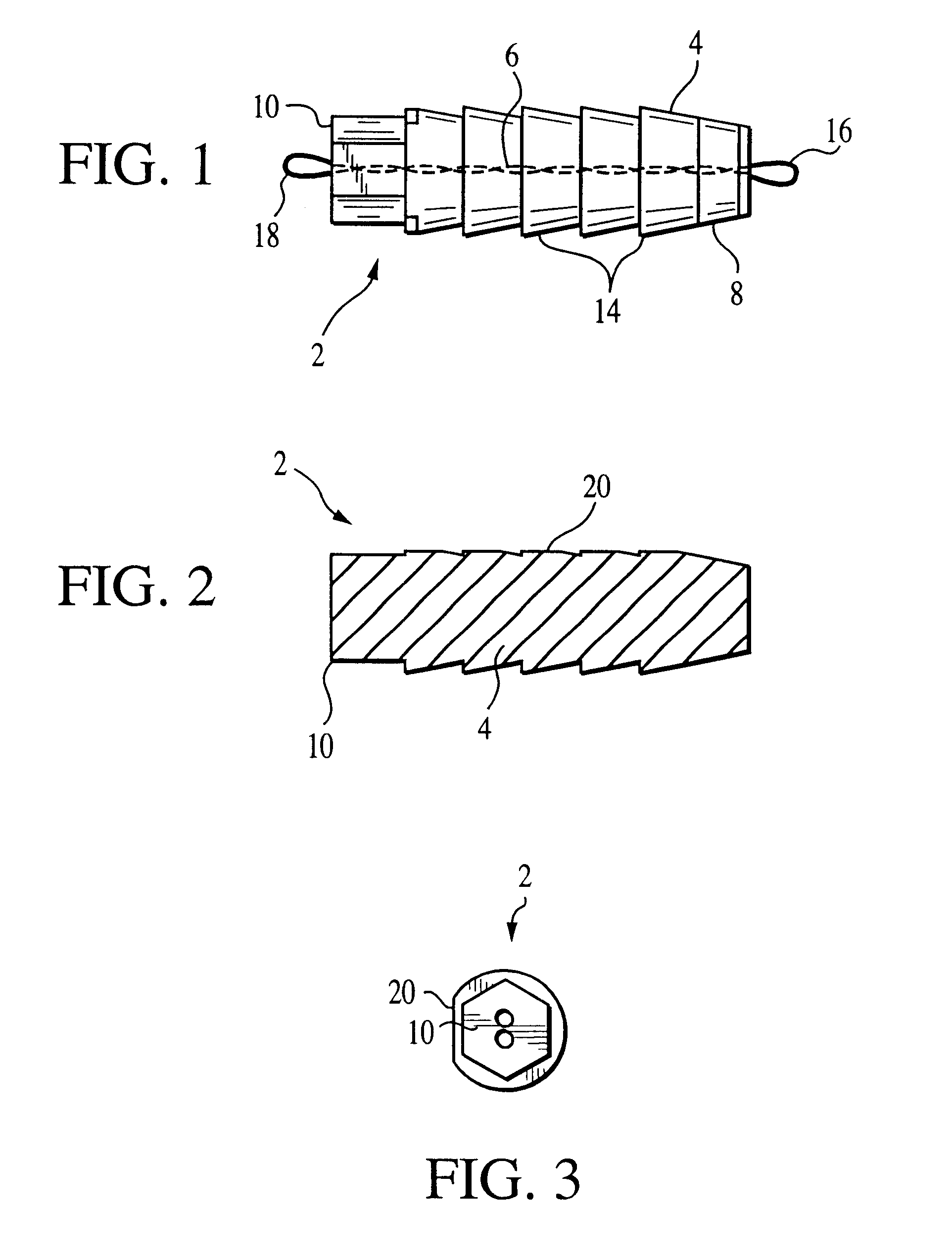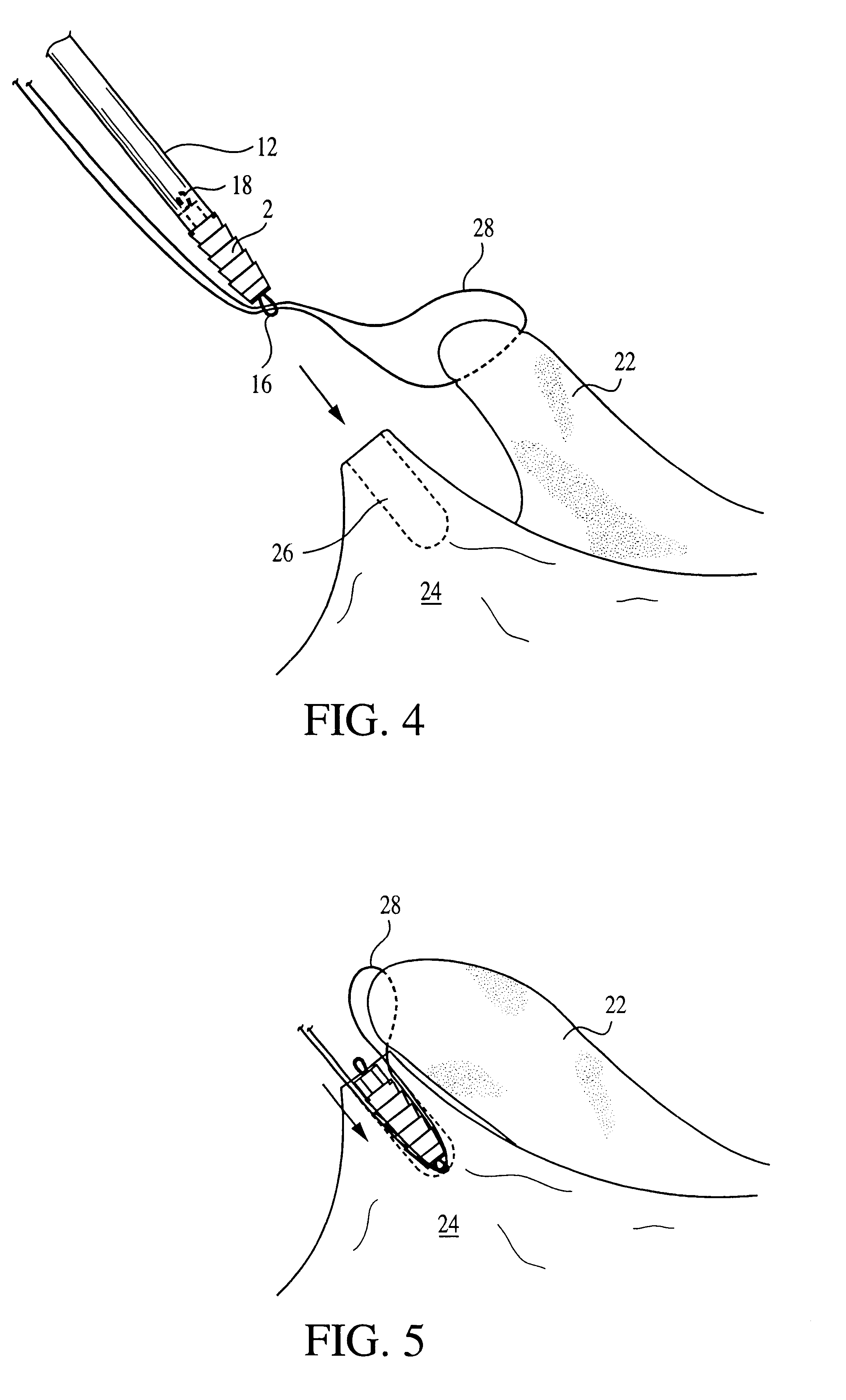Interference fit knotless suture anchor fixation
a knotless, anchor fixation technology, applied in the field of interference fit knotless suture anchor fixation, can solve the problems of time-consuming and laborious
- Summary
- Abstract
- Description
- Claims
- Application Information
AI Technical Summary
Benefits of technology
Problems solved by technology
Method used
Image
Examples
Embodiment Construction
Referring to FIG. 1, a suture anchor 2 according to the present invention is shown. Suture anchor 2 includes an anchor body 4 and a section of suture 6 forming a loop inside the suture anchor body. Anchor body 4 has a tapered distal end 8 and a proximal end with a drive head 10 formed to complement a suture anchor driver 12, shown schematically in FIG. 4. The anchor body 4 is provided with multiple, circumferential ribs 14 to enhance pull-out strength of the anchor from bone.
Suture section 6 is formed into distal loop 16 and an optional additional proximal loop 18 by overlapping or abutting two ends of the suture 6 and insert molding the suture while forming anchor body 4. The overlapping ends of suture can be twisted around each other or provided with knots, for example, to enhance pull-out strength of the suture from the anchor body.
Referring to FIG. 2, a flat 20 optionally can be formed on one side of the anchor body to provide a clearance for tissue suture passing back along the...
PUM
 Login to View More
Login to View More Abstract
Description
Claims
Application Information
 Login to View More
Login to View More - R&D
- Intellectual Property
- Life Sciences
- Materials
- Tech Scout
- Unparalleled Data Quality
- Higher Quality Content
- 60% Fewer Hallucinations
Browse by: Latest US Patents, China's latest patents, Technical Efficacy Thesaurus, Application Domain, Technology Topic, Popular Technical Reports.
© 2025 PatSnap. All rights reserved.Legal|Privacy policy|Modern Slavery Act Transparency Statement|Sitemap|About US| Contact US: help@patsnap.com



